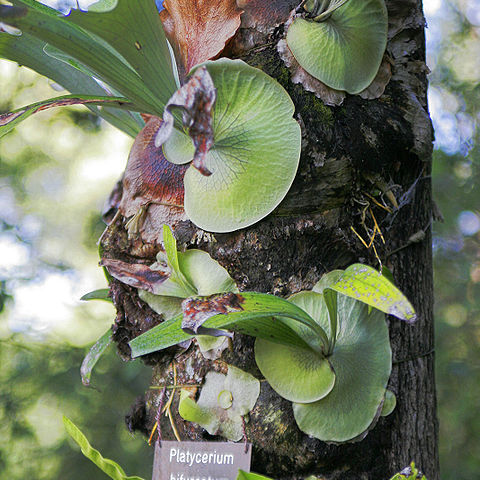Plants epiphytic or occasionally epilithic, of very striking appearance, solitary or in clusters. Rhizome thick, shortly creeping, concealed by roots and fronds; scales large, basifixed to peltate, mostly with a thickened dark central portion, margin ciliate, concolorous or pale brown; fronds clustered, extremely dimorphic; lamina fleshy, leathery, covered with stellate hairs when young; costa none, main veins conspicuous, dichotomously branched, usually several on each lobe or branch, minor veins visible or concealed, much anastomosing with free included veinlets. Basal fronds persistent, base strongly appressed to substrate, entire or forked several times; fertile foliage fronds in pairs, simple to variously dichotomously forked, erect to pendulous. Sori forming large soral patches, paraphyses many, stellate. Spores 64 per sporangium, or 8 (P. ridleyi Christ), monolete, smooth. x = 37.
Epiphytic or occasionally epilithic ferns of very striking appearance, growing solitary or in clusters. Rhizome hidden, short, with fronds clustered. Rhizome scales basifixed to peltate, variously set with glandular and non-glandular, simple and branched, uni-to multicellular hairs. Fronds of two types: persistent base fronds forming a distinct basket and deciduous foliage fronds, simple to variously dichotomously forked, set with stellate hairs. Base fronds remaining green or withering when old, lower part appressed, upper part closely appressed to spreading, entire to forked several times. Foliage fronds usually 2-several present at a time, erect to pendulous, forked up to 7 times. Sori forming large soral patches, set on a fine mesh of narrowly linear receptacles. Spores with an inconspicuous perispore, smooth or nearly smooth.
Fronds branched dichotomously, sporangia acrostichoid on part of surface of fertile frond.

